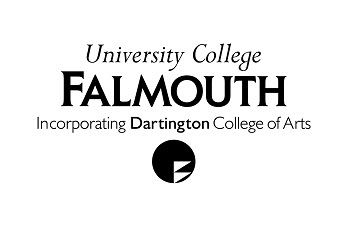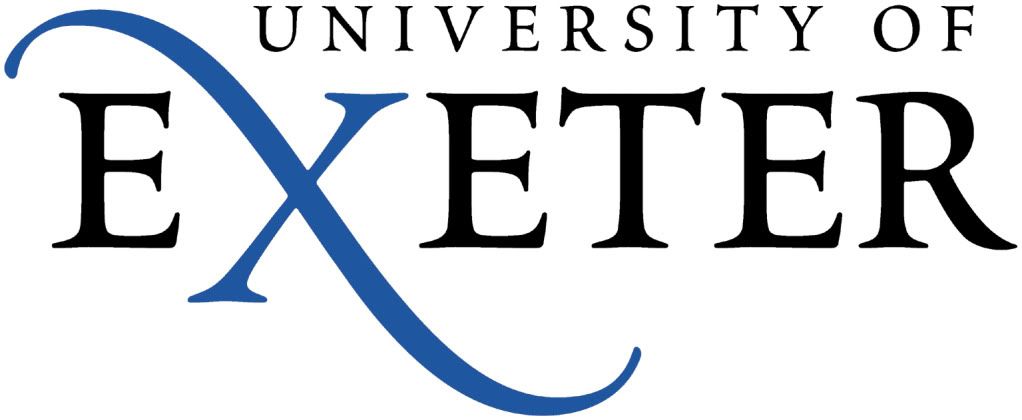With the Queen's Diamond Jubilee coming up in a couple of weeks, I decided to have a look through our archive and find out what was going on in 1952 in Cornwall using our collections. Since many of our collections are more modern, like the Cornish Performance Archives, most of the focus fell onto the Camborne School of Mines, the Institute of Cornish Studies, Falmouth School of Art, and painter and former principle of the Falmouth School of Art, Tom Cross.
In 1952, the Cornish political party Mebyon Kernow (Sons of Cornwall) had been going for just over a year, having been set up in January 1951. It was at this time a pressure group and contained activists and politicians from a number of political parties. Its aims were
- To promote and foster the Cornish language and literature,
- To study local conditions and attempt to remedy any that may be prejudicial to the best interests of Cornwall by the creation of public opinion or other means,
- To encourage the study of Cornish history from a Cornish point of view,
- By self-knowledge to further the acceptance of the idea of the Celtic character of Cornwall, one of the six Celtic nations.
The Cornish language had died out in about 1800, but in 1952 the recent years had seen a revival of interest. The Cornish Gorsedh (Cornish Assembly) had been set up 23 years before, an organisation dedicated to the preservation of Cornwall's Celtic spirit, through literature, language, music and the arts, and the recognition of all forms of important service to Cornwall and its people. The most accomplished writer in the Cornish language of the day was Robert Morton Nance, who was also the Grand Bard of the Cornish Gorsedh in 1952. He wrote several plays in Cornish, textbooks on the language, and developed a unified spelling for Cornish.
 |
| The Cornish Review, 1952 Vol 10 |
Richard Gendall, a leading expert in the Cornish language, wrote an article about Cornish Nationalism in Denys Val Baker's Cornish Review, 1952: “In recent years, and especially within the last year, there have appeared in Cornish newspapers and magazines a number of articles, letters, and reports with a savour of nationalism about them.” A major source of complaint was that Cornish mines were being neglected while those abroad received millions of pounds in subsidies, and that Cornish mines were prevented from achieving prosperity by crippling systems of taxation. There seemed to be two sides to Cornish nationalism in 1952: one sentimental, the other practical. "Sentimentally Cornwall is seen as a member of the Celtic family, with a past of battles against the Saxons, and rebellions against a changing world under the Tudors; a land whose Cornish language was not long ago to be heard and which even now is being cherished by a few devotees… Practically, Cornwall is seen as a small area with a great variety of resources, with a decreasing population already deprived of much of its best manhood by emigration due to economic necessity…”
During the Second World War nearly all crafts except purely rural ones came to a standstill and there was a real danger of British craftsmanship suffering a mortal blow. Thankfully, this was averted, and in the aftermath of war there was actually a revival of interest in crafts, and nowhere was this more apparent than in Cornwall. According to a survey by the Rural Industries Bureau, there were in 1952 more than 400 separate crafts in existence in the county, from the painting of sea-shells and the making of jewellery and decorations from pebbles to the more traditional – the blacksmith, wheelwright, saddler, and potter (H. Trevor, 1952. 'Crafts From Cornwall’, D V Baker (ed.) The Cornish Review).
Pottery was an art specifically associated with Cornwall - not surprising since the county was the home of the china clay industry. Bernard Leach, Britain’s leading potter, had set up his large co-operative pottery in St Ives in 1920, to which students and visitors from all over the world visited and in 1952 was still producing not only exquisite craft work for the luxury market, but a large amount of utility goods and slipware. Cornish pottery was in wide use in Cornwall itself and all over the world. Between the end of the war and 1952 over 400 applications had been received by the Leach Pottery by people who wanted to study the craft. At this time mechanisation and mass-production was overtaking and displacing local handicrafts. In protest, people were turning back to work which “springs from the heart and gives form to the human imagination” (Bernard Leach, My Work as a Potter).
Post-war Cornwall saw a remarkable flowering of the arts and literature. Barbara Hepworth and Ben Nicholson were spearheading the Modernist movement in Britain in sculpture and painting respectively. Abstract artist Terry Frost was appointed as Hepworth's assistant in 1951 and would go on to become an important artist in his own right. Other influential Cornish artists in 1952 include: Patrick Heron, Peter Lanyon, Bryan Pearce and Bryan Wynter. (FCP3/D)
 |
| CSM Magazine, 1952 Vol 52 |
Although mining in Cornwall at this time was in decline, Camborne engineers were held in high regards in various parts of the world. The report from the Camborne School of Mines annual school dinner in 1952 reveals some anxiety amongst students about the situation in South Africa. Since mining was in decline in Cornwall, many went on to work abroad after finishing at the School. The National Party with its policy of Apartheid had come into power only 4 years before in 1948. “The second and third years have heard much of South Africa from representatives of mining companies there, but it is doubtful if they have had their prejudices against the country so severely shaken as by Mr. Haggart’s speech.” (Mr. Haggart being Deputy Chairman of the Anglo-American Corporation of South Africa, Ltd.) He calmed the dinner attendees about the political activities going on in SA by pointing out that “South Africa is a relatively happy country, and that the alarm in England over the racial future of the country can be settled in a sensible manner”! This particular dinner ended in a brawl, after which some went home, and others went for a swim at Gwithian: “I suppose you don’t feel the cold if you’ve had the right spirit.” (CSM Magazine, 1952)
Meanwhile, the Camborne School of Mines (CSM) Club had been given a makeover with new curtains, pelmet boards, and central heating installed. It was now being patronized by many more members of the School, and sometimes they even condescended to let women up to the Club bar! The first time this happened was apparently before the Autumn Term dance (1951), and a great success it was: “You can’t get old so and so to put his hand in his pocket to buy you a half, but you just wait until his latest girlfriend says she’ll have a double gin and lime; up he trots, meak as a lamb, and slaps down his 3/8; oh yes; very good for business.”
 |
| Falmouth School of Art prospectus, 1952 |
Over in Falmouth, the School of Art was still relatively small. Having been founded in 1902 on Arwenack Avenue, the School had relocated in 1950 to Kerris Vean, Woodlane. Numbers of students were incredibly small compared with what it is today (University College Falmouth), with only 23 full-time! And, compared to the £9000 a year students will be expected to pay from next year, fees were much cheaper in 1952 at £25 a year, or £8.6.8 a term. The six members of teaching staff taught, among other subjects, Lettering & Illumination, Leatherwork, Dressmaking, Embroidery, and Pottery. Classes were aimed at preparing students for the Ministry of Education’s Intermediate Examination in Arts and Crafts, the National diploma in Design, and the Royal College of Art Entrance examination, with the School also providing part-time day and evening classes for those who worked or those who had a general interested in art.
60 years ago the Camborne School of Mines and Falmouth School of Art were very separate institutions. Could they have predicted then that at the time of the Queen's Diamond Jubilee they would be sharing the same campus? Probably not. Of course, Tremough did not exist at this time, and the idea of Combined Universities in Cornwall had not even been conceived. But despite sharing a campus, both have maintained their strong identities: CSM as one of the World’s most famous mining schools, and University College Falmouth as a vibrant and forward-thinking specialist arts college.
The Cornish Gorsedh is growing ever stronger, with 496 Bards at present. It continues to maintain the national Celtic spirit of Cornwall and annually awards Bardships to individuals who have provided outstanding service to Cornish culture. The highlight of the year is the Open Gorsedh, involving a procession of Bards, dressed in their blue robes, to a location of cultural significance where new Bards are initiated. Mebyon Kernow is now a recognised political party, fighting for Cornwall, a nation with its own distinct identity, language and heritage, to have the same right of self-determination as Wales and Scotland, and is leading a campaign for the self-government of Cornwall.
More information on the history of Cornwall, the Camborne School of Mines and Falmouth Art School can be found in our archive.






